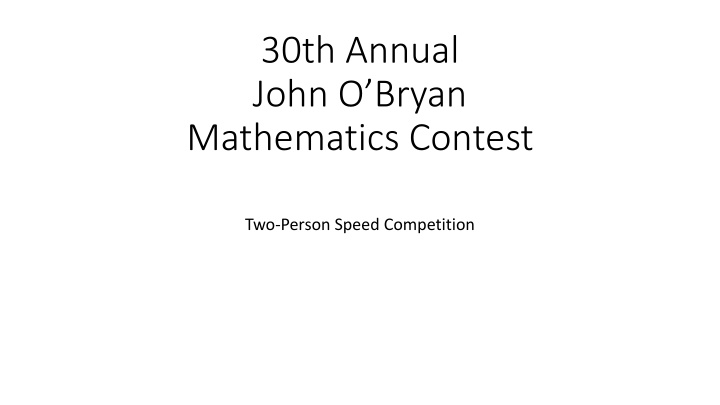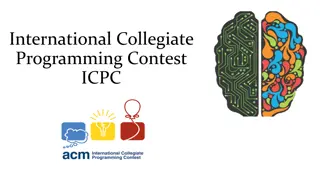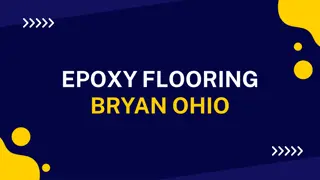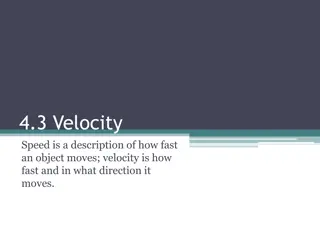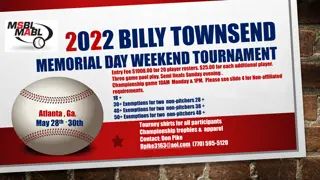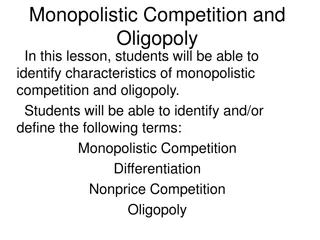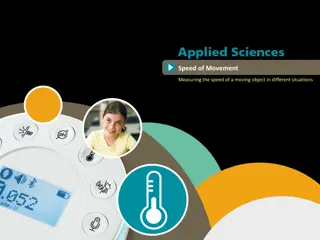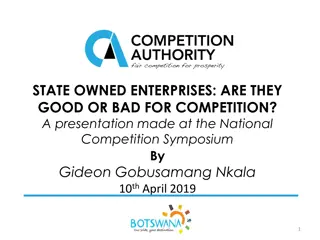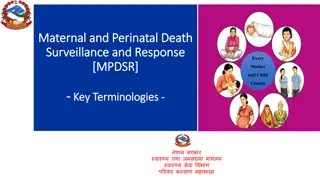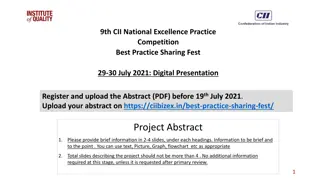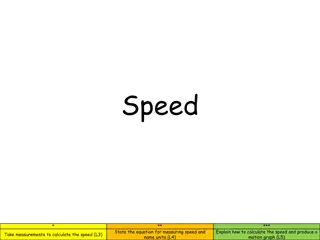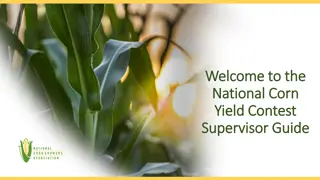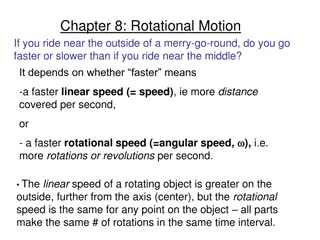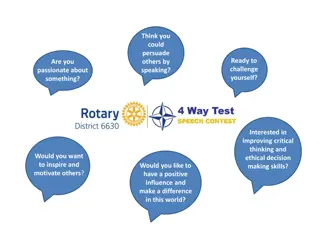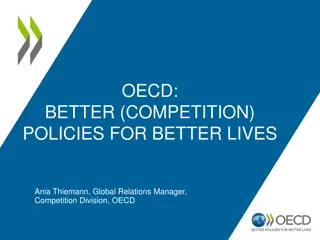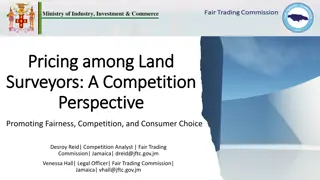30th Annual John O. Bryan Mathematics Contest - Speed Competition
The 30th Annual John O. Bryan Mathematics Contest features a Two-Person Speed Competition with basic rules such as no calculators allowed for the first four questions. Participants must find the sum of distinct roots, determine the last player standing in a circle game, and solve mathematical puzzles involving sums and products of numbers. Check out the challenging questions and answers presented in this intense math contest.
Uploaded on Sep 11, 2024 | 16 Views
Download Presentation

Please find below an Image/Link to download the presentation.
The content on the website is provided AS IS for your information and personal use only. It may not be sold, licensed, or shared on other websites without obtaining consent from the author.If you encounter any issues during the download, it is possible that the publisher has removed the file from their server.
You are allowed to download the files provided on this website for personal or commercial use, subject to the condition that they are used lawfully. All files are the property of their respective owners.
The content on the website is provided AS IS for your information and personal use only. It may not be sold, licensed, or shared on other websites without obtaining consent from the author.
E N D
Presentation Transcript
30th Annual John O Bryan Mathematics Contest Two-Person Speed Competition
Basic Rules Eight Questions; Three Minutes Each NO CALCULATORS on the First Four Questions! One Answer Submission Allowed Per Question; To Submit, Fold Answer Sheet and Hold Above Your Head for the Proctor; Answer must be submitted within 5 seconds of timer in order to count. Scoring (Each Problem) First Correct Answer = 7 points Second Correct Answer = 5 points All Other Correct Answers = 3 points
The Next Slide Begins The Competition. This is a timer example:
Question 1 (NO CALCULATORS) Question 1 (NO CALCULATORS) Find the sum of the distinct roots of the following four equations: 5? 8 = 112 ?2 4? 12 = 0 ?2= 288 ? 1 = 10
Question 2 (NO CALCULATORS) Question 2 (NO CALCULATORS) Players stand in a circle. Player 1 stays in. Player 2 is knocked out. Player 3, in; Player 4, out. This continues, knocking every other Player out, until only one Player remains. With 9 Players, let ? be the number of the last Player remaining; with 11 players, let ? be the number of the last Player remaining. Find the value of (2? + 3?).
Question 3 (NO CALCULATORS) Question 3 (NO CALCULATORS) The sum of two numbers is 15 while their product is 5. Let k be the sum of their reciprocals. Let w be the telescoping sum 600 + 600 + 600 + 600 + where the pattern continues indefinitely. Find the value of ? ?.
Question 4 (NO CALCULATORS) Question 4 (NO CALCULATORS) Let ? be the value of the ?-coordinate of the center of the circle whose equation is ?2+ ?2 6? + 8? 24 = 0. Let ? be the value of the ?-coordinate of the center of the circle whose equation is ?2+ ?2 16 + 18? 24? = 0. Find the value of (2? + 3?).
Question 4 (Answer) -21 You may use calculators beginning with the next question.
Question 5 Question 5 (CALCULATORS ALLOWED) (CALCULATORS ALLOWED) Let ?be the unit s digit of 311182023. Let ? be an integer greater than 50. One group of 50 numbers has an arithmetic mean of 32. Another group of 70 numbers has an arithmetic mean of k. Let ? be the smallest possible value of ? such that the arithmetic mean of both groups of numbers together is a positive integer. Find the value of (? + ?).
Question 6 Question 6 (CALCULATORS ALLOWED) (CALCULATORS ALLOWED) Let ???(?) = 5 5 ???(2). Let ? be the number of distinct possible committees of 7 that can be chosen from 5 girls and 4 boys if the majority of members of each committee must be girls. Find the value of (? + ?).
Question 6 (Answer) 3151
Question 7 Question 7 (CALCULATORS ALLOWED) (CALCULATORS ALLOWED) Working alone at constant rates, it takes the respective number of hours to clean the SU Ballroom: Nora, 3; Katie, 7; Ulrich, 13. With no loss of efficiency, let ? and ? be the respective number of hours required if the first two work together and then if the last two work together. Expressed as a decimal, find the value of (? + ?).
Question 7 (Answer) 6.65
Question 8 will be the final question. Proctors will keep and total your answer sheets after you submit this question. Please remain in your seats until totals have been verified, as ties among the top three positions would be broken with tie-breaker questions.
Question 8 Question 8 (CALCULATORS ALLOWED) (CALCULATORS ALLOWED) Let ? be a thirty-two digit number such that the last three digits (hundreds, tens, and units) of ?2 are 225. Let ? be the sum of all possibilities for the tens digit of ?. Let ? = 1. Let ? be an integer such that 1 + ? is a zero of ? ? = ?3+ ??2+ 32? 30. Find the value of (? + ?).
Question 8 (Answer) 1 This ends the competition unless there are ties; please remain while proctors total the scores.
Tiebreaker 1 Tiebreaker 1 (CALCULATORS ALLOWED) (CALCULATORS ALLOWED) Let ? be the tangent of the smallest angle of a right triangle whose hypotenuse has a length of 89 and one of whose legs has a length of 39. [?] is defined as the greatest integer which is not greater than ? . If 2 < ? < 3, let ? be the largest possible integral value of ?2 ?2. Find the value of (1600? + ?).
Tiebreaker 2 Tiebreaker 2 (CALCULATORS ALLOWED) (CALCULATORS ALLOWED) Find the average of the first 50 terms of the arithmetic sequence: 7,10,13,16, . Express your answer as an exact decimal.
Question T2 (Answer) 80.5
Tiebreaker 3 Tiebreaker 3 (CALCULATORS ALLOWED) (CALCULATORS ALLOWED) Find the sum of 0.4(where the 4 repeats) and 0.672(where the 72 repeats). Express your answer as an improper fraction reduced to lowest terms.
Question T3 (Answer) 553/495
